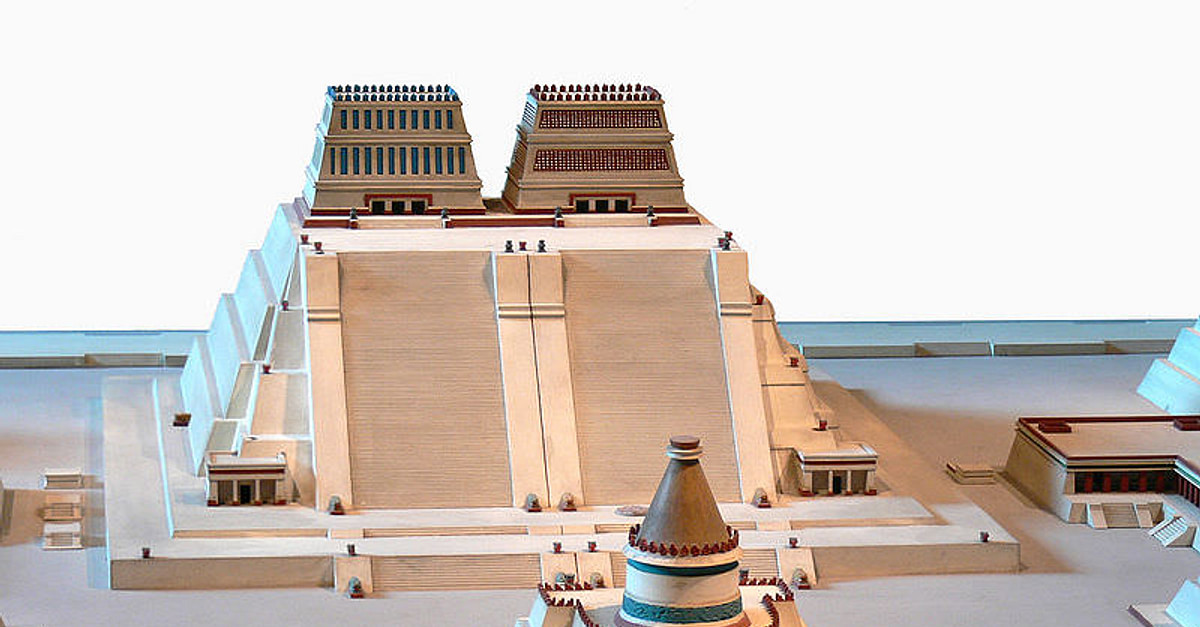Unit 5- Indigenous Americas
1/13
Earn XP
Description and Tags
Study Guide.
Name | Mastery | Learn | Test | Matching | Spaced |
|---|
No study sessions yet.
14 Terms
Chavín de Huántar
Created: 900-200 BC
Art Movement: Archeological site
Original Location: Northern Highlands, Peru
Culture: Chavín
Material: Stone [The architectural complex], granite [Lazón and sculpture], hammered gold [Jewelry]
Function: It was a place of worship. The location of Chavín seems to have helped make it a special place, the temple built there became an important pilgrimage site that drew people and their offerings from far (SANTA FOE)

Mesa Verde
Created: 450-1300 C.E.
Period: Indigenous Americas.
Original Location: Montezuma County, Colorado.
Culture: Ancestral Puebloan (Anasazi).
Material: Sandstone. (made of stone, mud mortar, and plaster)
Function: Mostly residential, some were used for storage and rituals: these were the most famous residential sites dated to the 12th and 13th century.

Yaxhilán
Created: 750 C.E.
Period: Indigenous America in the Classic period (250-900 C.E.)
Original Location: Chiapas, Mexico.
Culture: Mayas.
Material: Limestone.
Function: City-state and to emphasize the power of the Mexica Empire.

Giant Serpent
Date of Creation:1070c.
Culture:Mississippian Civilization
Period:Indigenous Americas
Original Location: Adams County Southern Ohio
Material:Earthwork/Effigy Mound/Dirt
Function: May have been used to mark time or seasons, perhaps indicating when to plant or harvest. Snakes were seen to be a symbol of fertility on earth in crops.

Templo Mayor
Date of Creation: 1375-1520
Original Location: Tenochtitlan
Culture: Aztec
Period: Indigenous Americas
Materials: Stone
Function: The Templo Mayor was constructed as a double pyramid with a wide platform that supported two different shrines, with two separate staircases leading up to each. The template on the right was dedicated to Huitzilopochtli, the patron of deity of Aztecs, or Mexican, and god of war and fire, and the one on the left was dedicated to Tlaloc, an ancient god of rain and fertility (the structure can best be described as a step pyramid)

Ruler’s feather headress
Date of Creation: 1428–1520 ce
Artist/Culture: Mexica (Aztec)
Location: Mexico/ now in Europe sent by Hernan Cortes
Media: Feathers (quetzal and cotinga) and gold.
Function: Art made of feathers was seen as a symbol of wealth and status Thought to have ceremonial purpose. Were used to create fans and shields as well as headdresses

City of Cuzco
Date of Creation: 1440 CE, convent added 1550 CE-1650 CE
Artist/Culture: Inca
Location: Central highlands, Peru
Movement: Indigenous Peoples
Media: Andesite (volcanic rock)
Function: Capital of the Inca Empire, at 11,200 feet above sea level.

Maize Cob
Date of Creation: 1440 - 1533 C.E.
Original Location: Qorikancha
Culture of Origin: Inka (Inca)
Artists: Incan metalsmiths
Period: Indigenous Americas
Materials: Sheet metal/repoussé, metal alloys
Function: an offering for religious purposes

Machu Picchu
Date of Creation:1450c.-1540c.
Location: Central Highlands, Peru
Culture:Inca
Period:Indigenous Americas
Materials:Granite
Function:Architectural Complex, it is known that Machu Picchu was a sacred place where the Incas worshiped their gods, but that would not have been the only use that the Inca gave it, it was used as a retreat for the emperor and his family. The city due to its position had an ideal climate in which they used to plant crops such as coca leaves. It was used by the emperor in winter because of Machu Picchu’s mild weather.

All-T’oqapu tunic
Date of Creation: 1450-1540
Original Location: Peru
Culture: Inca
Period: Indigenous Americas
Materials: Camelid fiber and cotton
Function: The garment was a royal tunic that symbolized the power of the “Sapa Inca”

Bandolier bag
Date of Creation: 1850 C.E.
Original Location: Lenape (Delaware tribe, Eastern Woodlands)
Culture of Origin: Lenape
Period: Indigenous Americas
Materials: Beadwork on leather
Function: As part of male ceremonial dress that indicated social status and cultural identity

Transformation mask
Date of Creation: Late 19th Century
Artist/Culture: The Kwakwaka’wakw/Kwakiutl
Location: Northwest coast of Canada
Movement: Indigenous
Media: Red cedar wood, paint, and string
Function: Creates a powerful effect during ceremonies
Worn during potlatch where the host displays his high social status
Portrayed family ancestry which could contain family crests
This item could be passed from generations of family members in a clan

Painted Ink Hide
Date of Creation: 1890-1900
Artist: Cotsiogo (Cadzi Cody)
Culture: Shoshone culture
Location: Wind River Reservation, Wyoming
Movement: Indigenous Native American Art
Media: Elk hide and pigment
Function: Most likely for tourists; to support the artist. Could be used as a wall hanging or rug

Black-on-black ceramic vessel
Created: Mid 20th century CE
Art Movement: Indigenous Americas
Original Location: Tewa, Puebloan, San Ildefonso Pueblo, New Mexico
Artist: Maria and Julian Martinez
Material: Blackware ceramic
Function: Appear beautiful and keep the tradition of ceramic-making alive.